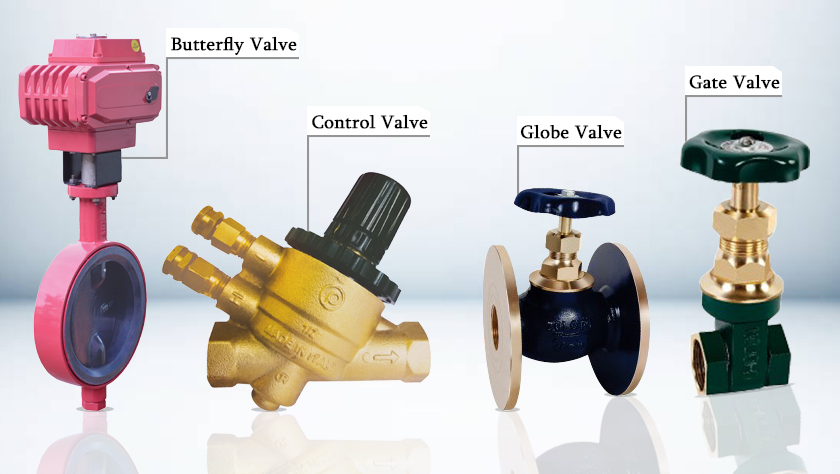How Control Valves Influence Power Effectiveness in Industrial Settings
How Control Valves Influence Power Effectiveness in Industrial Settings
Blog Article

Maximize Energy Cost Savings and Comfort With Advanced Structure Automation Controls
In the realm of modern-day architecture and facility monitoring, the integration of sophisticated structure automation controls stands as an essential improvement. By using the power of automation, buildings can adapt, respond, and evolve in means that were once unthinkable.
Power Efficiency Advantages
Power efficiency benefits can substantially lower power usage and functional costs in structures. By implementing energy-efficient methods and technologies, building proprietors and drivers can attain considerable savings while also adding to environmental sustainability. One of the key advantages of improving power effectiveness in structures is the decrease of utility expenses. Energy-efficient systems, such as sophisticated structure automation controls, can optimize making use of resources like heating, illumination, and air conditioning, leading to reduced energy expenses in time.
Additionally, improved power performance can prolong the lifespan of structure devices and systems. By operating extra effectively, cooling and heating systems, lighting fixture, and various other building elements experience less wear and tear, resulting in lowered maintenance and substitute costs. In addition, energy-efficient structures commonly command greater property worths and rental rates, giving long-lasting economic advantages to proprietors.
Moreover, energy performance can boost passenger convenience and efficiency. Effectively managed interior environments with ideal lighting and thermal conditions develop a more enjoyable and helpful workspace, resulting in boosted worker contentment and performance. Overall, the energy performance advantages associated with sophisticated structure automation controls are multifaceted, incorporating price savings, environmental stewardship, and resident well-being.
Enhanced Convenience Control
Enhancing convenience control in structure settings needs an innovative integration of sophisticated automation systems for optimum passenger wellness. By utilizing sophisticated building automation controls, facilities can tailor the indoor setting to satisfy the particular requirements and preferences of occupants. control valves.
Improved comfort control goes beyond basic temperature modifications. It includes attributes such as individualized settings, occupancy sensing units, and all-natural light usage to develop a vibrant and responsive atmosphere. By including these advanced controls, structures can not only enhance comfort yet likewise improve power efficiency by optimizing system procedures based upon real occupancy and usage patterns. Inevitably, prioritizing passenger convenience via advanced automation systems brings about an extra pleasurable and healthier indoor setting.
Functional Efficiency Improvements

Additionally, the execution of real-time monitoring and analytics tools enables building operators to identify energy inefficiencies and functional anomalies promptly. By constantly keeping track of power usage patterns and system efficiency metrics, adjustments can be made in real-time to maximize power usage and make certain peak functional effectiveness. control valves. Furthermore, including need action approaches into building automation controls Check Out Your URL can further boost functional effectiveness by dynamically adjusting energy usage based upon grid conditions and pricing signals
Indoor Environment Optimization
Reliable interior environment optimization is an essential aspect of building automation controls, making certain residents' comfort and wellness while making best use of power financial savings. By using sophisticated sensing units and controls, developing automation systems can constantly keep track of and change temperature, moisture degrees, air quality, and air flow to develop an optimum interior setting. Maintaining comfy and constant conditions not only enhances occupant complete satisfaction but also enhances productivity and overall well-being.
Indoor climate optimization also plays a critical duty in power effectiveness. By fine-tuning air conditioning, heating, and ventilation systems based upon real-time data and occupancy patterns, constructing automation controls can significantly lower power consumption - control valves. Applying methods such as demand-controlled ventilation and thermal zoning can aid lessen energy waste while ensuring that each location of the building gets the necessary conditioning.

Lasting Setting Production
Structure automation manages not only optimize indoor environment problems for power effectiveness and resident comfort but additionally lay the structure for developing a lasting atmosphere through strategic management of systems and sources. By integrating advanced structure automation modern technologies, such as sensing units, actuators, and smart software, centers can check and change power use in real-time to lessen waste and reduce their carbon impact. These systems allow anticipating upkeep, recognizing possible issues before they rise and optimizing equipment efficiency to improve durability and efficiency.
In addition, sustainable environment development extends past energy management to encompass water preservation, waste reduction, and indoor air quality enhancement. Structure automation controls can manage water usage, spot leakages, and guarantee correct waste disposal techniques, More hints adding to overall sustainability efforts. In addition, by managing and checking air flow and purification systems, these technologies enhance passenger wellness and productivity while reducing power consumption related to HVAC procedures.
Conclusion
In final thought, progressed building automation controls offer significant advantages continue reading this in regards to power cost savings, convenience control, operational performance, interior environment optimization, and creating a sustainable atmosphere. By executing these controls, structures can attain optimal performance while decreasing energy intake and improving resident convenience. It is noticeable that using advanced automation innovation is important in boosting structure performance and creating a more sustainable future.
Energy performance advantages can significantly decrease energy consumption and operational expenses in structures. On the whole, the power performance advantages linked with sophisticated structure automation controls are multifaceted, encompassing cost savings, ecological stewardship, and owner well-being.
Additionally, incorporating need action methods right into structure automation controls can additionally improve functional effectiveness by dynamically adjusting power usage based on grid problems and prices signals.
Building automation controls not only maximize indoor climate problems for energy efficiency and owner comfort but additionally lay the structure for producing a lasting atmosphere through critical administration of systems and sources.In final thought, progressed building automation regulates offer substantial advantages in terms of energy financial savings, comfort control, functional effectiveness, interior climate optimization, and creating a lasting atmosphere.
Report this page